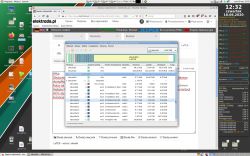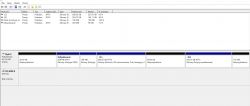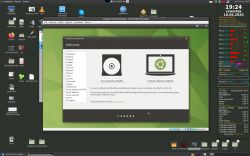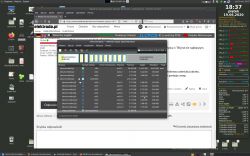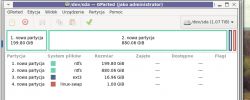Hello
Recently, Windows 10 has started to annoy me a lot. So I decided to install Ubuntu 20.04 LTS. (This post concerns the Acer Aspire F5-573g-762j laptop. I have a 1Tb disk with partitions - one about 600gb, and the other about 400gb - I keep various data on this one, etc. I would like Windows to work on dualboot with Linux after all. I installed everything according to the instructions - for dualboot to work, here are the links:
https://www.benchmark.pl/testy_and_recenzje/u...next-windows-10-instalacja-krok-by-kroku.html
https://www.youtube.com/watch?v=Zcn4pnSFq2E
https://www.youtube.com/watch?v=n_FffFwqBLA
I've done it several times.
It says that linux has been installed correctly, but it does not work (The GNU GRUB menu with the choice of Windows or Linux does not start. MSconfig does not show up. I have fast startup disabled. I want to allocate about 90Gb for Ubuntu If it's not a problem, I would like you to exchange how much should I allocate for space and how to create a partition during installation, e.g. primary, ext4 filesystem with journaling, /root. Please help
Regards
Recently, Windows 10 has started to annoy me a lot. So I decided to install Ubuntu 20.04 LTS. (This post concerns the Acer Aspire F5-573g-762j laptop. I have a 1Tb disk with partitions - one about 600gb, and the other about 400gb - I keep various data on this one, etc. I would like Windows to work on dualboot with Linux after all. I installed everything according to the instructions - for dualboot to work, here are the links:
https://www.benchmark.pl/testy_and_recenzje/u...next-windows-10-instalacja-krok-by-kroku.html
https://www.youtube.com/watch?v=Zcn4pnSFq2E
https://www.youtube.com/watch?v=n_FffFwqBLA
I've done it several times.
It says that linux has been installed correctly, but it does not work (The GNU GRUB menu with the choice of Windows or Linux does not start. MSconfig does not show up. I have fast startup disabled. I want to allocate about 90Gb for Ubuntu If it's not a problem, I would like you to exchange how much should I allocate for space and how to create a partition during installation, e.g. primary, ext4 filesystem with journaling, /root. Please help
Regards



